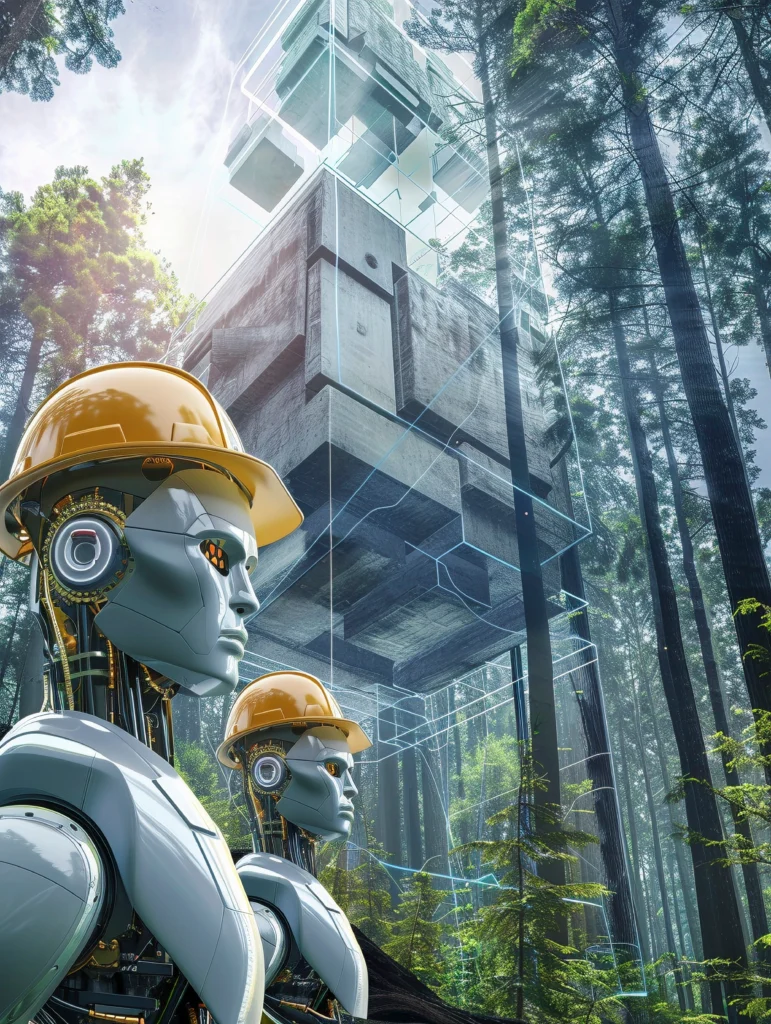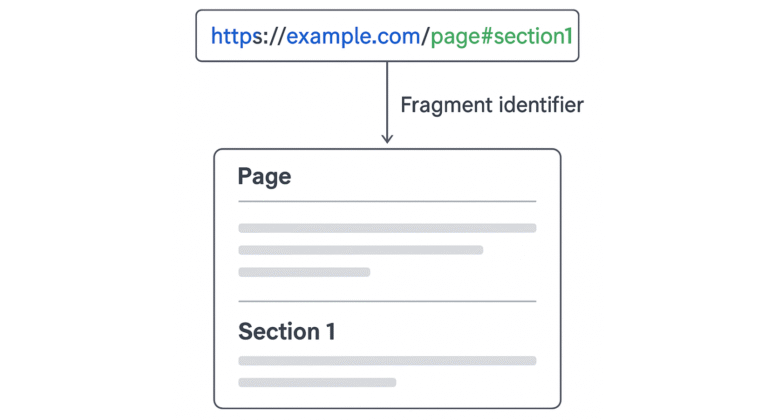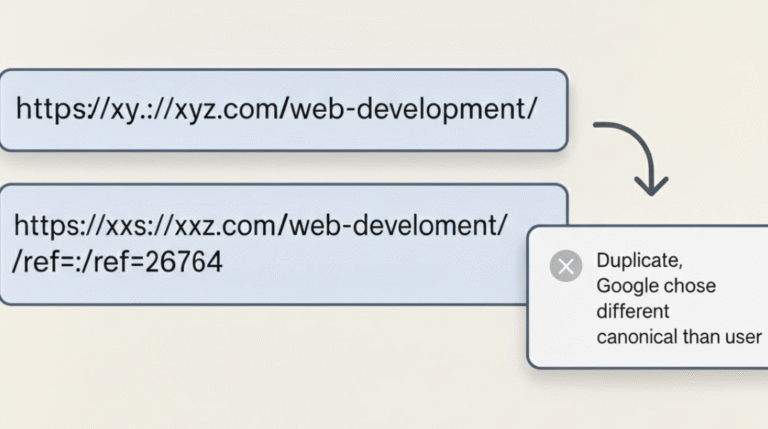AI is transforming architecture by enabling rapid design exploration, smarter material and site analysis, and early risk prediction. It automates repetitive tasks, enhances collaboration, and uses AR/VR to deliver immersive client experiences.
AI in Architecture
AI helps architects design buildings that look good, work well, and are better for people and the environment.

AI Meets Architecture
AI-Powered Innovation in Architecture and Construction
Artificial intelligence is changing how buildings are designed and built. It helps architects and engineers work faster, make smarter decisions, and create more efficient and sustainable designs.
By using AI tools, designers can quickly test different ideas, compare options, and find the best solutions for cost, performance, and energy use. AI can also analyze site data and materials to suggest improvements that save time and resources.
With over five years of experience in AI software development, Gleexa helps architecture and construction teams use artificial intelligence to make their work easier and more effective. From early design to final execution, our AI solutions help boost productivity, improve collaboration, and bring new levels of creativity to every project.
Faster Design and Planning
20
%
Higher Accuracy and Performance
30
%
Lower Construction and Material Costs
15
%
AI Use Cases
Artificial Intelligence Use Cases in Architecture
Early-Stage Planning ➚
AI can generate floor plans automatically based on site data, building dimensions, and usage goals. By using generative adversarial networks (GANs), architects can create and compare multiple layouts in seconds reducing manual drafting time and increasing accuracy.
Architectural Mapping ➚
With computer vision and drone technology, AI can automatically produce CAD models and floor plans from photos or scans of existing structures. This allows architects to understand spaces better and streamline renovation or restoration planning.
AI in Sketching and Ideation ➚
AI-powered tools like Midjourney or DALL·E accelerate the creative process by generating multiple design variations from simple prompts. Architects can quickly visualize new ideas and select the most promising directions for further refinement.
Generative Design ➚
Generative design uses AI algorithms to produce countless design options that meet defined constraints such as materials, space limits, or energy goals. Architects can evaluate these options to find the best balance of aesthetics, cost, and performance.
Compliance Automation ➚
AI systems can analyze designs for compliance with local codes, accessibility rules, and safety standards. Automating this process helps firms reduce revision cycles, improve quality, and minimize costly rework.
Urban Planning ➚
AI can model large-scale environments by analyzing traffic flow, population density, and green space distribution. With predictive simulations, city planners can make data-driven decisions that enhance livability and sustainability.
Energy Efficiency Optimization ➚
Machine learning models evaluate a building’s energy performance before construction begins. AI tools like Ladybug and Honeybee help identify inefficiencies and suggest improvements to HVAC, lighting, and insulation systems.
Construction Safety Monitoring ➚
AI-powered computer vision systems can track site activity in real time to detect safety risks such as missing protective equipment or unsafe proximity to machinery. By combining this with BIM data, architects and contractors can predict hazards and prevent accidents.
Parametric Design ➚
AI-enhanced parametric tools allow architects to set parameters like structure, shape, and materials and generate complex geometric designs automatically. This approach combines precision, creativity, and flexibility in modern architecture.
Automated Documentation ➚
AI can extract essential data from blueprints to generate reports, permits, and contracts automatically. Automation reduces errors, saves time, and ensures smoother project management.
Structural and Safety Validation ➚
Before construction starts, AI algorithms can analyze design data to find potential structural weaknesses. This helps prevent costly design flaws and ensures greater safety and reliability.
Predictive Maintenance ➚
AI sensors monitor building systems to predict when maintenance is needed. By identifying early signs of wear or malfunction, architects and building managers can reduce downtime and extend building lifespan.
Project Scheduling and Resource Management ➚
AI-powered project management tools can analyze labor, budget, and timelines to create optimized schedules. These systems can predict bottlenecks and recommend adjustments to keep construction on track.
Client Visualization and Experience ➚
AI integrates with 3D modeling and virtual reality to create immersive design presentations. Clients can explore digital versions of their projects in real time and request adjustments before construction begins.
Sustainability and Lifecycle Analysis ➚
AI can assess a building’s entire lifecycle from material sourcing to energy consumption and end-of-life recycling. This enables architects to design more sustainable, resource-efficient, and environmentally responsible buildings.
Explore what AI can do for your architecture firm.
Gleexa builds custom AI tools that simplify processes, spark new ideas, and help teams work smarter and faster.
Excellence That Earns Recognition
Recognized for Remarkable Achievements
Since 2019, Gleexa has been helping businesses bring ideas to life through smart web, mobile, and AI solutions. We design impactful, scalable products that drive growth, improve experiences, and keep you ahead in the digital race.





Case Studies
Our Success Stories
See how we help businesses grow through real success stories across web and mobile development, AI solutions, digital marketing, and beyond.
Examples of AI in architecture projects
AI Tools for Architects
AI is changing how architects design, plan, and manage projects. Here are some standout tools and platforms shaping the future of architecture today.
Autodesk Spacemaker
Spacemaker helps architects streamline early-stage planning by combining site data, climate factors, and regulations. In minutes, it generates multiple design options analyzing sun exposure, noise, and floor area to find the most efficient, sustainable layout.
Delve (Sidewalk Labs & DeepMind)
Built on Google Cloud, Delve uses AI to create optimized urban development designs based on budget, site constraints, and daylight goals. Used in London’s Wembley Park, it helped improve livability and density through data-driven architectural decisions.
Arup Neuron
Arup’s Neuron platform integrates AI, IoT, BIM, and 5G to make buildings smarter and more sustainable. Its Energy app predicts and manages power use in real time helping developers like Swire Properties cut energy consumption by 15%.
DALL·E 2
OpenAI’s DALL·E 2 generates images from text descriptions, letting architects instantly visualize design ideas, materials, and styles before creating detailed renders.
Midjourney
Midjourney enables architects to generate concept renders in minutes. With text prompts and iteration features, it helps teams brainstorm and refine creative design directions faster.
Ada by Jenny Sabin & Microsoft
“Ada,” an interactive installation at Microsoft’s campus, merges AI, architecture, and emotion. It reacts to facial expressions and sounds, translating them into dynamic light patterns—showcasing how AI can make architecture responsive and human-centered.
Our Network Size
Dedicated Talents
30
+
Hire Talent
Within
Hours
8
Top Remote Talents
Vetted
2
%
Cost Advantage
Saving
20
%
Globally Serve
Happy Clients
15
+
Why Use AI in Architecture
Benefits of Using AI in Architecture
Integrating AI into architectural practice brings efficiency, innovation, and sustainability across every stage of design and construction. Here are the key ways AI is transforming how architects work and how buildings are designed and maintained.
Enhanced Design Exploration
AI-powered generative design tools help architects explore countless design alternatives in minutes, accelerating creativity and innovation.
Resource Optimization
AI analyzes design parameters and environmental data to optimize material and energy use leading to more sustainable, cost-efficient buildings.
Automation of Repetitive Tasks
Tasks like drafting, BIM clash detection, and scheduling can be automated with AI, allowing architects to focus on creative and strategic work.
Smarter Project Management
AI supports project scheduling, resource allocation, and risk prediction keeping projects on time, on budget, and running smoothly.
Real-Time Collaboration
By unifying data across disciplines, AI improves communication among architects, engineers, contractors, and clients, streamlining workflows.
Better Visualization & Client Engagement
AI-driven 3D and XR tools create immersive design experiences, helping clients visualize and interact with projects before construction begins.
Predictive Maintenance & Building Management
AI and IoT systems predict maintenance needs, optimize operations, and extend the lifespan of building systems.
Improved Energy Efficiency
By analyzing energy consumption patterns, AI recommends design and operational changes that reduce costs and environmental impact.
Greater Precision & Fewer Errors
AI detects inconsistencies and potential design flaws early, reducing rework and ensuring higher-quality outcomes.
Data-Driven Decision-Making
AI turns complex datasets into actionable insights, empowering architects to make more informed, evidence-based design choices.
Innovate. Automate. Evolve.
AI Tools and Frameworks for Architecture
- AI & Machine Learning Frameworks: TensorFlow, PyTorch
- Parametric & Generative Design Tools: Rhino + Grasshopper, Autodesk Spacemaker, Delve (by Sidewalk Labs)
- Visualization & Concept Development Tools: Midjourney / DALL-E 2, VR & AR Integrations
- Environmental & Sustainability Analysis Tools: Ladybug Tools, Arup Neuron
- Automation & Collaboration Tools: ChatGPT API / GPT-based Assistants, BIM Integrations with AI
Ways We Collaborate
Choose the Right Collaboration Model for You
At Gleexa, we make it easy for you to choose how you want to work with us. Whether you need a dedicated team, flexible hourly support, or a fixed-cost project – we’ve got you covered.
Dedicated Team
Get a full-time team that works only on your project. They act as part of your in-house team and help you scale faster while keeping full control of your development process.
Flexible Billing
Best for evolving projects with dynamic requirements. You pay for the time and resources used, with the flexibility to adjust priorities or features as your needs evolve.
Fixed Scope
Great when you know exactly what you need. You set a fixed price and clear timeline from the start, ensuring everything stays on budget and runs smoothly to final delivery.
Bringing your AI vision to life
How We Deliver AI Solutions
We follow a clear, step-by-step process to turn your AI vision into practical, high-performing solutions that drive real business results.
1
Discover Your Needs
We start by understanding your business challenges and defining how AI can bring the most value.
2
Assess & Prepare Data
Our experts evaluate your data sources, clean and structure them to ensure accuracy and consistency.
3
Design the Strategy
We outline the right AI approach, select the best tools, and create a clear roadmap for implementation.
4
Build & Train the Model
We develop and train custom AI models designed to meet your goals and deliver measurable outcomes.
5
Deploy & Optimize
Once launched, we integrate the solution into your systems and continuously refine it for better performance.
Everything you need to know
Frequently Asked Questions
Here are some answers to common questions that can help you learn more about us and how we use AI to transform architecture.
What is AI in architecture?
AI in architecture refers to the use of artificial intelligence technologies like machine learning, generative design, and predictive analytics to assist architects and engineers in designing, planning, and constructing buildings more efficiently. It helps automate repetitive tasks, optimize resources, and explore creative design possibilities.
How is AI used in architecture today?
Architects use AI for generative design, 3D modeling, BIM automation, energy analysis, and real-time project management. Tools like Autodesk Forma, Spacemaker, and Delve help teams analyze site data, test design options, and create sustainable, cost-efficient structures faster than traditional methods.
What are the main benefits of using AI in architecture?
AI improves design quality, saves time, and reduces costs. It enhances sustainability through data-driven material and energy analysis, supports real-time collaboration across teams, automates repetitive tasks, and minimizes human error during the design and construction process.
How does AI improve sustainability in building design?
AI helps architects evaluate energy consumption, optimize natural light, and recommend sustainable materials early in the design process. This reduces waste and carbon footprint while improving long-term energy efficiency and environmental performance.
What is generative design in architecture?
Generative design uses AI algorithms to generate thousands of design alternatives based on specific parameters such as budget, materials, site constraints, and sustainability goals. Architects can then choose the best-performing option, saving significant time and effort in the early design stages.
How does AI work with BIM and other architectural technologies?
AI enhances BIM (Building Information Modeling) by automating updates, detecting design clashes, and predicting maintenance needs. It also integrates with digital twins, AR/VR, and IoT to create smart, connected, and self-optimizing buildings that adapt to real-time data.
What are the challenges of adopting AI in architecture?
Common challenges include high initial costs, limited AI expertise, resistance to new technologies, and data integration issues. However, cloud-based AI platforms and training programs are making adoption easier and more accessible for firms of all sizes.
Will AI replace architects?
No – AI will not replace architects. Instead, it will augment their capabilities. While AI can handle data-heavy and repetitive tasks, the creativity, intuition, and human understanding that architects bring to design remain irreplaceable. AI serves as a partner, not a replacement.
What are some real-world examples of AI in architecture?
Firms like Patriarche, Stantec, AFRY, and ARCO are using Autodesk Forma and other AI-driven tools to accelerate design, reduce carbon impact, and improve sustainability. For example, AFRY used AI to design flood-resistant housing in Sweden, while Stantec used AI for early-stage carbon analysis.
What does the future of AI in architecture look like?
The future of AI in architecture is defined by smarter, greener, and more adaptive buildings. AI will continue to optimize design, construction, and facility management, enabling architects to focus on innovation, sustainability, and human-centered design.
Insights
Latest from Blog
Explore our engaging blogs covering the latest in technology, software development, digital marketing, remote work, and beyond.
Get in Touch
We’re Here to Help!
Thank you for your interest in Gleexa. Our team is committed to providing you with the expertise and support your business needs to succeed. Simply fill out the form below, and we’ll get back to you as quickly as possible.







